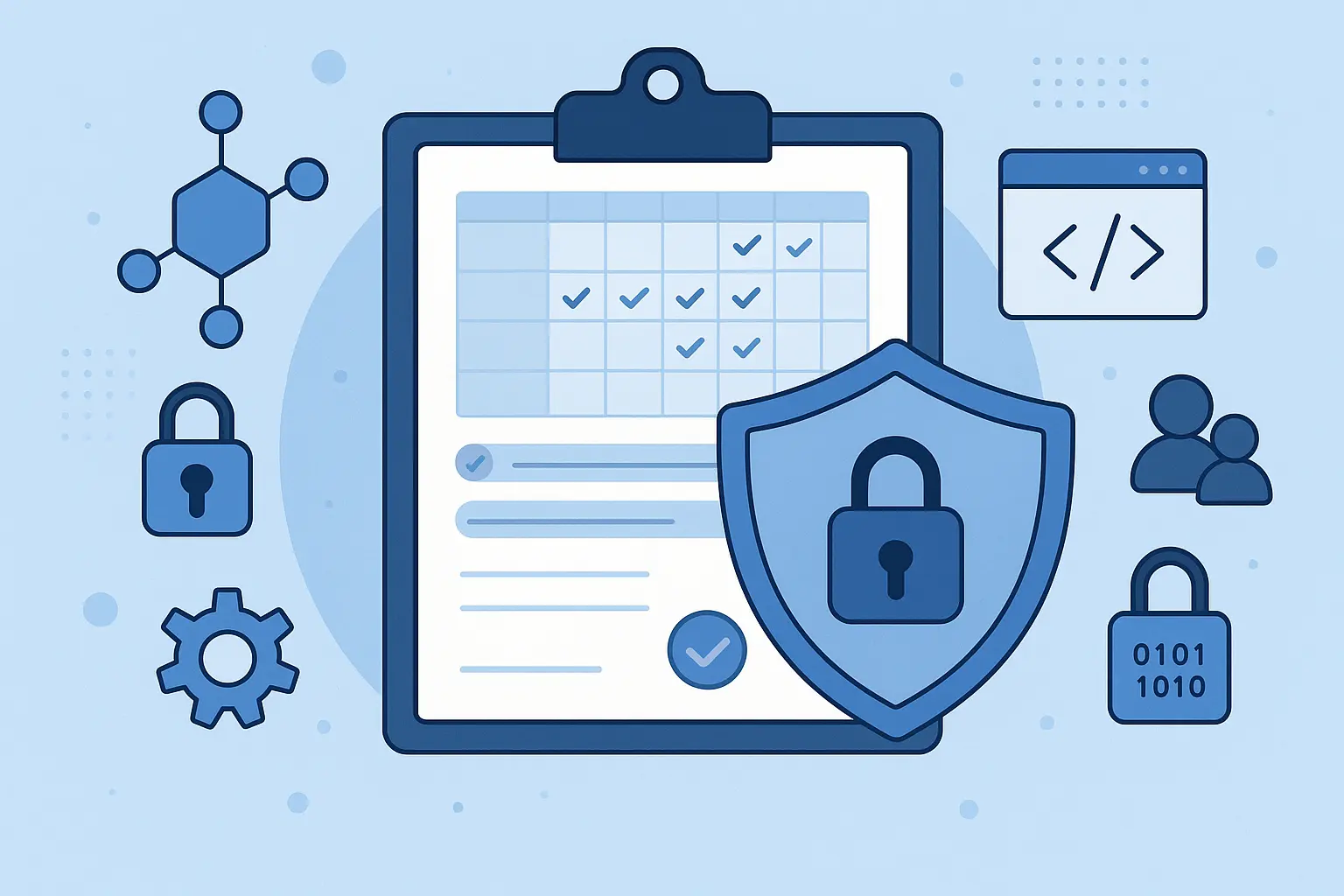You’re sitting in your office, looking over your business’s IT infrastructure, and you can feel that familiar weight settling in. Maybe your in-house team is overburdened, maybe you’re experiencing rising operational costs, or perhaps you’re simply not keeping up with competitors’ technological advances. Either way, the reality is clear: your IT systems need help, but building an expansive in-house team seems too costly and time-consuming.
In this article, we’re going to dive into the world of IT outsourcing, examine its potential to boost business growth and explore how to do it right. If you’ve ever felt overwhelmed by the demands of modern IT, this is your guide to reclaiming control and finding your footing in a competitive market.
Strategic IT Outsourcing Overview
Before we dig deeper into the “how,” let’s define what IT outsourcing is all about. Outsourcing services could range from cloud computing, cybersecurity, network management, and technical support, to even software development. Strategic IT outsourcing takes it one step further—it’s not just about getting rid of day-to-day IT headaches, it’s about aligning outsourced IT functions with your core business objectives.
Small companies face significant challenges in IT due to a talent shortage, high operational costs, and increasing cybersecurity threats. One solution to these challenges is IT outsourcing, which helps businesses grow, eliminate obstacles, and minimize risk. Specialized IT providers, like Daystar, are often more equipped to handle cybersecurity than your internal team, simply because they have the bandwidth and expertise to focus solely on it. They can monitor your systems 24/7, deploy sophisticated detection systems, and ensure compliance with data protection regulations.
How IT Outsourcing Can Give You a Competitive Advantage
Now that we’ve covered some common pain points, let’s shift our focus to how IT outsourcing can go beyond just solving problems. When done strategically, it can put your business ahead of the curve.
1. Focus on Core Competencies
Every company has its core strengths—the unique value propositions that make it stand out in the market. However, handling IT issues can distract your team from focusing on these core competencies. Outsourcing your IT allows you to free up internal resources. In turn, this can lead to faster growth, greater innovation, and a more agile business model.
Your team can concentrate on strategic initiatives that drive revenue and enhance customer satisfaction. This shift not only enhances productivity but also fosters an environment where creative ideas can flourish. As your organization becomes more adept at leveraging its strengths, you position yourself to seize new opportunities in the market. If you’re considering this strategic move, you can find Calgary MSPs like CausMX to help streamline your IT needs.
2. Access to Cutting-Edge Technology
Technology is evolving rapidly. Keeping up with new developments like artificial intelligence (AI), blockchain, and cloud infrastructure requires significant investment in both money and time. IT outsourcing provides you access to the latest technology without having to absorb the costs associated with constant upgrades and new system implementations.
By partnering with an IT provider that invests in the latest tools, you can implement cutting-edge solutions faster, helping your business stay ahead of competitors. From automating routine tasks with AI-powered tools to improving customer engagement through advanced analytics, the possibilities are vast.
3. Improved Scalability
Growth is the goal, but it comes with challenges. As your business expands, so do your IT needs. When you handle everything in-house, scaling up means investing in more hardware, software, and staff. With IT outsourcing, you don’t have to worry about those growing pains. A good provider can help you scale effortlessly without the headache of managing the logistics yourself.
Whether you’re launching new products, expanding to new markets, or integrating new platforms, outsourcing ensures you have the infrastructure to support growth without any interruptions.
4. Enhanced Customer Experience
Customer expectations today are higher than ever. They expect fast, seamless, and personalized experiences. A slow website, buggy software, or poor customer service can drive them straight to your competitors. By outsourcing your IT or using offshore software development, you ensure that your systems are running optimally at all times.
Many outsourcing companies also offer specialized IT support services that can improve the customer experience. Whether it’s 24/7 technical support for your online platform or rapid deployment of new features, your customers will benefit from a smoother, more reliable interaction with your brand. Partnering with a nearshore software development company can further enhance these services, providing expert teams in nearby time zones for faster feature deployment and seamless technical support.
5. Risk Mitigation and Compliance
Nowadays, dealing with risk mitigation and compliance is essential, especially with the growing rules around data privacy and security. Regulations like GDPR in Europe and CCPA in California mean businesses need to elevate their efforts to safeguard customer information. Overlooking these laws can result in hefty fines and damage to your reputation. That’s why it’s vital for companies to have effective strategies in place—like robust data protection, regular audits, employee training, and straightforward privacy policies. Keeping up with these regulations not only ensures compliance but also fosters trust and loyalty among your customers in our data-driven world.
Outsourcing IT services can help you navigate this complex landscape. Providers can implement systems that ensure your business meets legal obligations. Additionally, they can help you prepare for the worst-case scenarios by setting up disaster recovery plans and ensuring business continuity.
Strategies and Tools in IT Outsourcing
When it comes to IT outsourcing, companies are all about finding the right strategies and tools to boost efficiency, streamline operations, and deliver top-notch services.
1. Service Level Agreements (SLAs)
One of the first things many companies set up is Service Level Agreements (SLAs). These are like the rulebooks that lay out what to expect in terms of service delivery, response times, and performance metrics. It’s all about keeping everyone on the same page, and there are handy tools out there to help track compliance.
2. Project Management Methodologies
To keep things organized and adaptable, many teams jump on board with project management methods like Agile and Scrum. They use various platforms to manage tasks, timelines, and team communication. Plus, collaboration tools make it easy to chat in real-time, which is especially helpful for remote or distributed teams. And with software for product management in the mix, teams can centralize workflows, align priorities, and keep product development moving forward with far more clarity and efficiency.
3. Cloud Computing
Cloud computing is another game-changer. Over 50 percent of enterprises will utilize industry cloud platforms by 2028 for growing business initiatives. Use advantage of flexible and scalable cloud services, which can really cut down on costs. You’ll often find them using popular cloud platforms for everything from hosting to storage and application deployment.
4. Automation and DevOps Practices
A lot of companies are also diving into automation and DevOps practices. This helps them work more efficiently and minimize human error in repetitive tasks. Continuous Integration/Continuous Deployment (CI/CD) tools streamline their development processes.
5. Data Security and Compliance
Data security and compliance are no joke. Companies are stepping up their game to adopt strong security measures and ensuring they follow regulations like GDPR and HIPAA, using various security software and data loss prevention tools.
6. Customer Relationship Management (CRM)
Managing client relationships is key, and that’s where CRM systems come into play. These tools help companies keep track of interactions and boost customer satisfaction. Business Intelligence (BI) tools are also great for digging into data and making informed decisions.
7. Knowledge Management Systems
To enhance learning and efficiency, knowledge management systems are set up to create a central repository for documentation, processes, and best practices. It’s all about making information easily accessible.
8. Outsourcing Vendor Management
Building connections with multiple vendors enable you to diversify their services and minimize risks. This is often tracked using vendor management software.
9. Performance Monitoring
Keeping an eye on performance is essential, so companies use various monitoring tools to continuously check their IT systems and applications, ensuring everything runs smoothly.
By combining all these strategies and tools, IT outsourcing companies can fine-tune their operations, improve service quality, and stay ahead of the competition.
Choosing the Right IT Outsourcing Partner
First things first, get a handle on what your business really needs. Take a moment to identify the IT challenges you’re facing. Look for a company that showcases successful projects with businesses like yours—check out their case studies or client reviews. Talking to other clients can give you a real sense of the provider’s reliability and overall service quality. You want to make sure they share your values and understand your goals, as this makes collaboration so much smoother. Good communication is vital, especially if you’re working with an offshore team. Having regular check-ins and shared objectives prevents misunderstandings.
You want a provider that can easily adjust its services to match your evolving demands, whether that means ramping up support during busy times or dialing it back when things slow down. A great partner will not only meet your current needs but also anticipate what you might require down the road. Plus, check that they comply with all the relevant regulations in your industry—this will help protect your reputation and avoid any legal headaches down the line.
Conclusion
Strategic IT outsourcing isn’t just about saving costs or solving immediate issues. It’s about turning your IT infrastructure into a competitive advantage. By tapping into global talent, accessing cutting-edge technologies, and focusing on core business functions, outsourcing allows you to accelerate growth, enhance customer experiences, and stay ahead of the competition.








